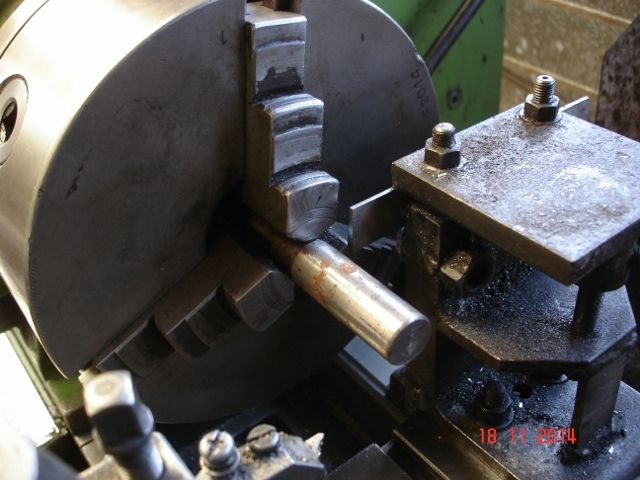Yes, rake angle does affect matters under discussion, but it’s not simple. So I’m deliberately staying away from rake angle at the moment, as I lent my copy of Sandvik’s ‘Modern Metal Cutting…’ out some while ago and haven’t yet got it back. Should be here by Saturday, when I’ll be able to consult the oracle about rake effects.
Chris: GHT recommends (p. 60 of Model Engineer’s Workshop Manual) “Use a top-rake less than that normally used on a turning tool for the same material”. The Iscar tip has, as far as I can measure it with a loupe with a measuring graticule,, 6 degrees of top rake, so it is relatively shallow.
Backlash – not sure I go along with that. I’ve just done a test on the Connoisseur: skimmed a 22mm bar round, set a 2.5mm depth of cut at 0.1mm/rev., and then backed off the feedscrew so the cross slide was ‘floating’ half way into the backlash. Then noted the reading on the DRO and set it cutting. A decent cut, although not as much as the lathe can handle, but the DRO never budged, even though it reads to 0.00025”. Can’t do this test with a parting tool, of course, but it should serve to illustrate my reticence re backlash, at least on its own.
Oh, the cross slide weighs 3.1 kg, equipped rear tool post (Dickson block + toolholder & tool) is 2.15 kg, equipped top slide is 3.4 kg, total 8.65 kg to be shifted by the tool.
You’ve brought out an important point re lathe condition – I only started off to consider the arguments re ‘up and out’ versus ‘down and in’, so other factors are, by definition, excluded from my postings! But lathe condition is of course very important, such as spindle & bearing condition and adjustment, chuck condition, are the jaws bell-mouthed, is the work held only by the outer parts of the jaws (e.g. 25mm bar in a 4” chuck that won’t pass it through), how much overhang, how stiff is the bar being parted, is the tool width appropriate to the diameter of the bar, etc., etc.. Any or even worse, all of these could completely override a perfect tooling set up. So yes, the envelope can be tighter than for normal turning. But probably the biggest factor is the chip clearance problem, I reckon, which is really the big difference between turning and parting – the forces are directly comparable!
Neil: all the forces disappear if you stop feeding, not just Fa! It’s not as straightforward as saying Fa is just the reaction force, or that Ft should be not be perpendicular. For example, there’s also a frictional force that pushes outwards, caused by friction between the chip and the tool rake face, but I’ll not go further until the Gospel According to St. Sandvik is back in my hands.
Whacking the tool in too fast? Yes, that would be a recipe for disaster, but would a model engineer with parting problems wind the handle fast enough? I found 0.008”/rev was ok, even though the lathe stalled because of the power requirement. But it didn’t dig in, it just ground to a halt.
Ah, now, feeding too fast, together with Chris’s comment re machine condition – the Connoisseur has a big spindle, big bearings, and carries a good chuck, in as-new condition. For the parting tests the bar was through into the spindle bore, so held over the full length of the jaws – if that had not been the case, the work might have tried to climb atop the tool, and that would have given the impression of a dig-in.
Will: jump in as much as you like, but given what we’re talking about here, wouldn’t chipping in be a more apt expression?!
Blowlamp: good point. I’ve tried a parting blade (not the integral-shank tool shown in one of the photographs) to reduce the diameter of a bar by pointing it at, and feeding towards, the chuck – worked well, no problem.
Mark C.






